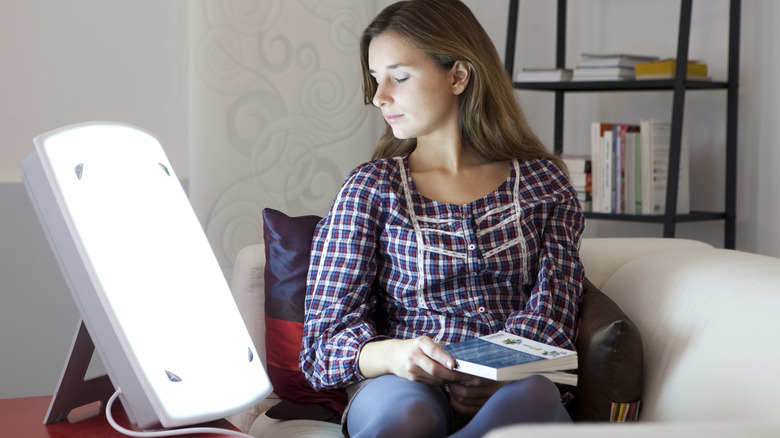Seasonal depression affects up to 10% of the population, including four out of five women, reports Mental Health America. Its symptoms range from mild to severe and may include anxiety, mood swings, lethargy, increased appetite, and bad sleep. Some people also lose interest in their favorite things or experience feelings of guilt and hopelessness. If left unaddressed, these problems can lead to mental health disorders, social withdrawal, drug use, and other complications (per Mayo Clinic). For example, you may lose your motivation to work, exercise, and go out, or simply feel too tired to leave home.
While it’s not possible to prevent seasonal depression, there are steps you can take to restore your energy and stamina. The Cleveland Clinic recommends taking vitamin D supplements and spending more time outdoors, among other measures. Depending on the severity of your condition, you may also benefit from cognitive behavioral therapy or antidepressants. Some say that phototherapy, which involves the use of sun lamps and light boxes, can be helpful, too. These devices replicate natural outdoor light, which in turn may help balance your hormones and provide some relief.
The science behind light therapy

Seasonal depression, or seasonal affective disorder (SAD), usually occurs in the fall or winter. Its exact cause is unknown, but most experts believe that it has something to do with the reduced sunlight, which can affect your internal clock and hormone levels — especially serotonin and melatonin. In rare cases, SAD can occur in the spring or summer, explains the Mayo Clinic. Sun lamps and other similar devices can address the underlying cause of SAD by exposing your body to bright light. “What light therapy does is compensate for the lack of exposure that we get from natural sunlight,” psychologist Adam Borland told the Cleveland Clinic.
This alternative treatment requires sitting near a sun lamp or light box for about half an hour. Depending on the light wavelength, it may help with seasonal depression, acne, migraines, or sleep disorders. In a 2024 clinical trial, light therapy has been shown to reduce chronic back pain and depression symptoms, reports the journal Pain Medicine. Another 2024 study published in Pain Medicine found that bright light treatment may benefit people with fibromyalgia. Moreover, it appears to be effective in the treatment of major depressive disorder, a mental health condition that affects about 5% of people worldwide, according to 2024 research featured in JAMA Psychiatry.
Sun lamps and light boxes may improve SAD symptoms
Clinical evidence indicates that light therapy can indeed improve SAD symptoms. For example, an earlier study published in the Archives of General Psychiatry in 1998 found that 61% of the patients who used lightboxes attained remission from seasonal depression in just three weeks. A 2024 review of 20 studies conducted on people who used bright light devices for 30 to 120 minutes per day suggests that light therapy has small-to-moderate effects on SAD. Plus, it’s relatively safe and well-tolerated (via BJPsych Open).
This alternative therapy can be just as effective as antidepressants, but it doesn’t work for everyone, notes Harvard Medical School. Its efficacy depends on how much light your body needs to function optimally, among other factors. Additionally, sun lamps and light boxes are not regulated by the FDA, making it difficult to assess their performance. Harvard Medical School recommends buying a premium quality device that emits fluorescent light.
In an interview with the Cleveland Clinic, psychologist Adam Borland said that it’s best to choose a sun lamp or light box that delivers 2,500 to 10,000 LUX and use it for 30 minutes every morning. Simply place it next to the bed or on your desk just like you’d do with a regular lamp. Avoid using it in the evening because it can affect your sleep. Note that light therapy may not be safe for people with vision problems or bipolar disorder, warns Dr. Borland.